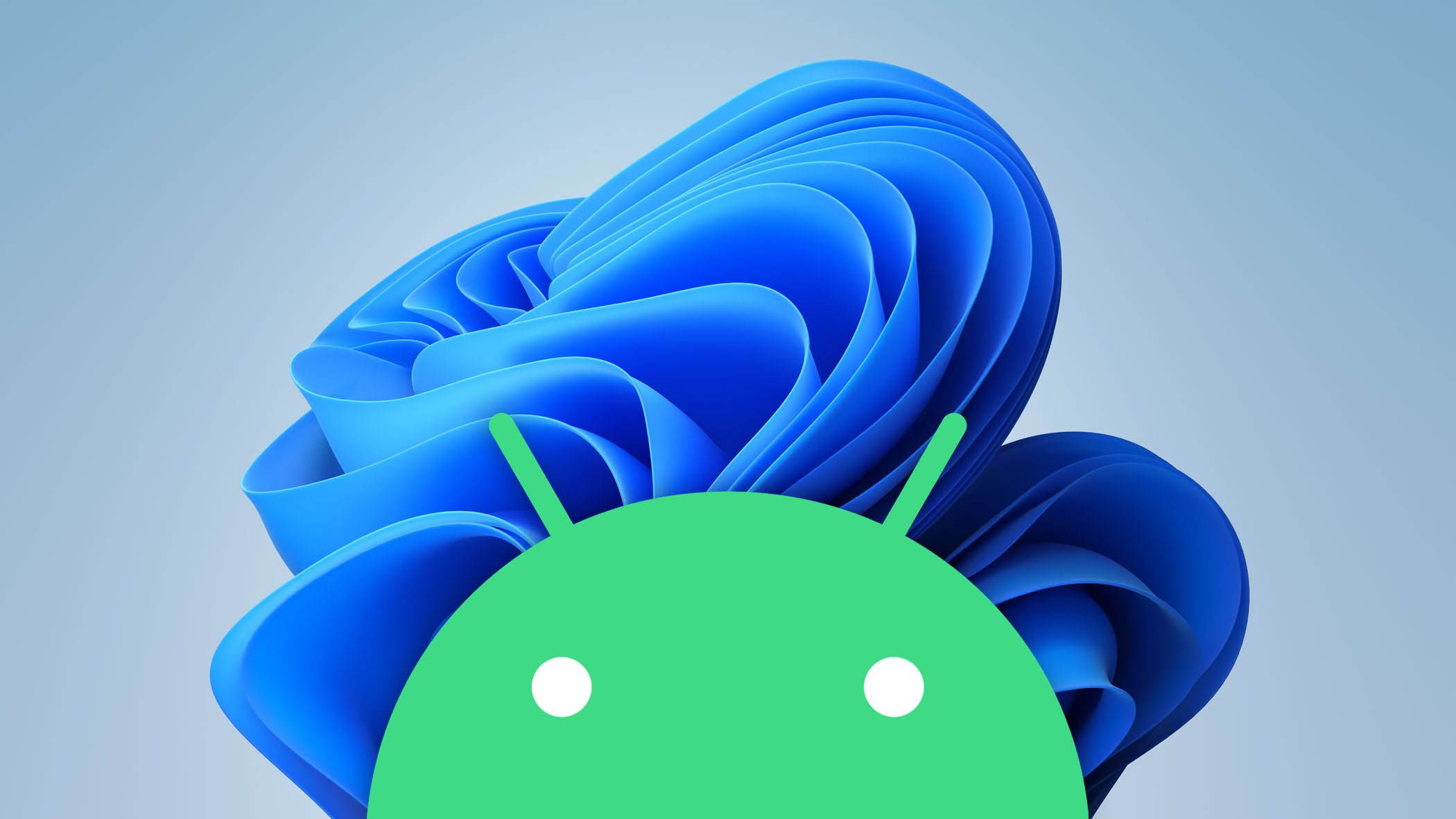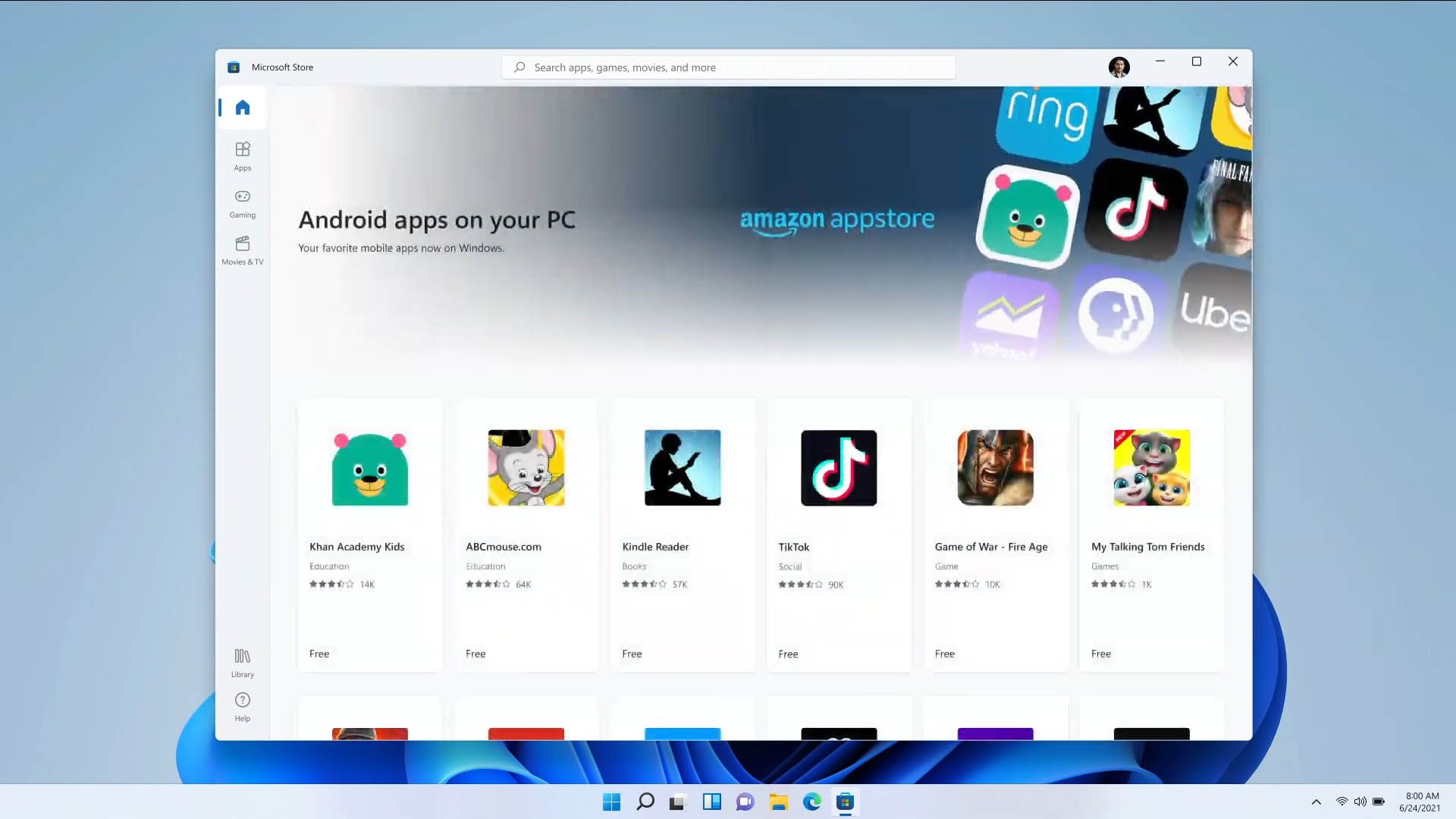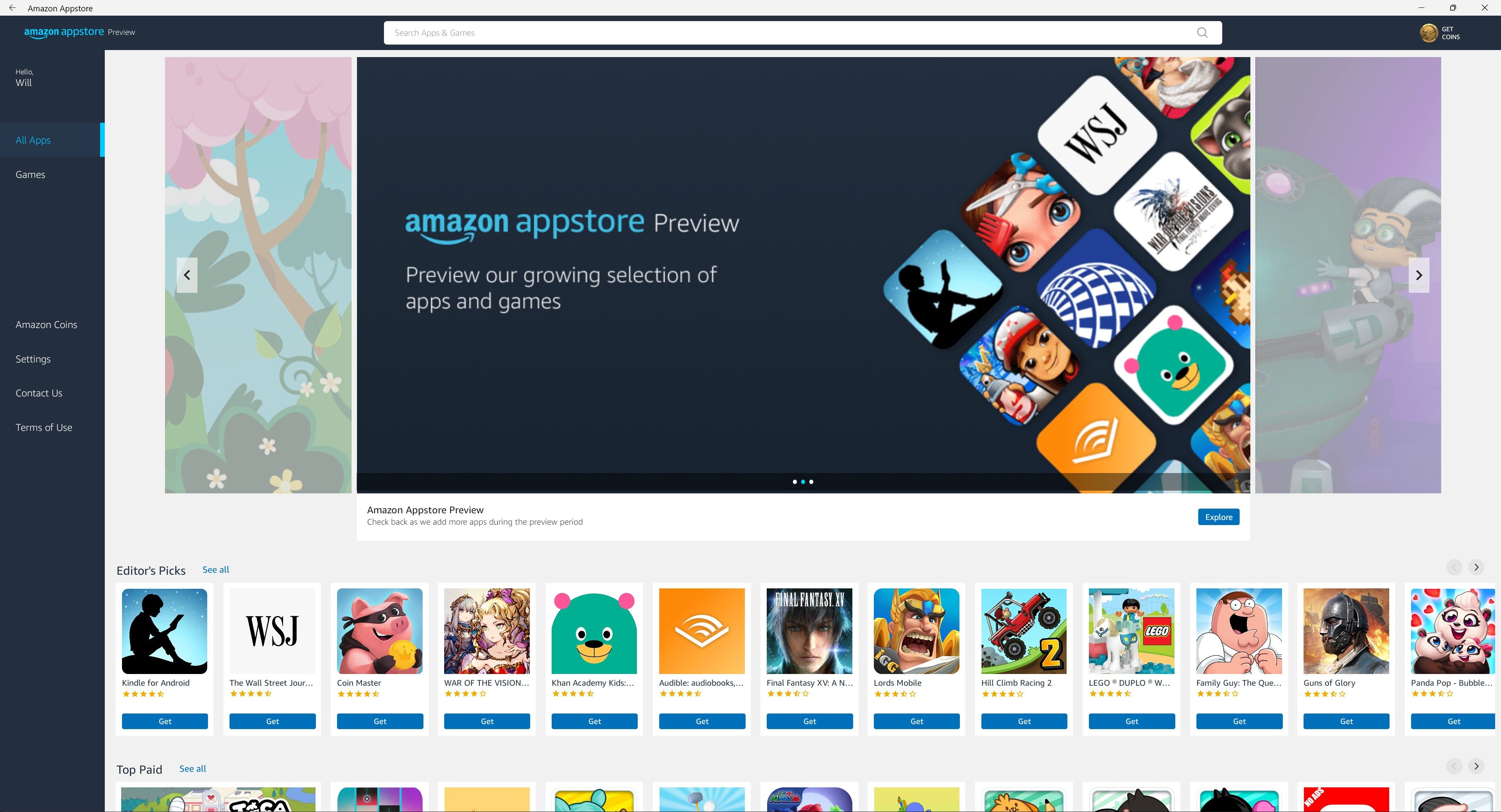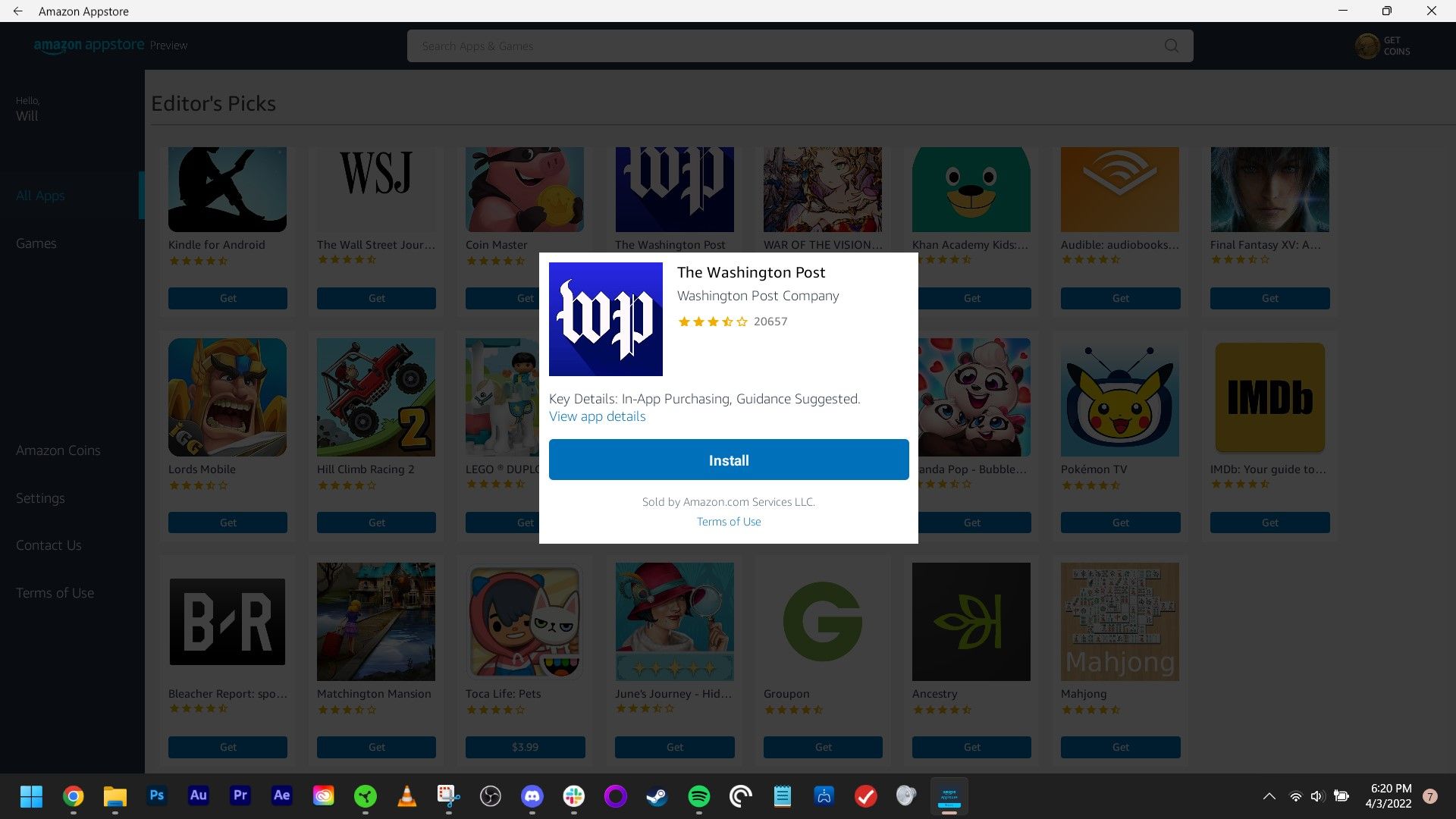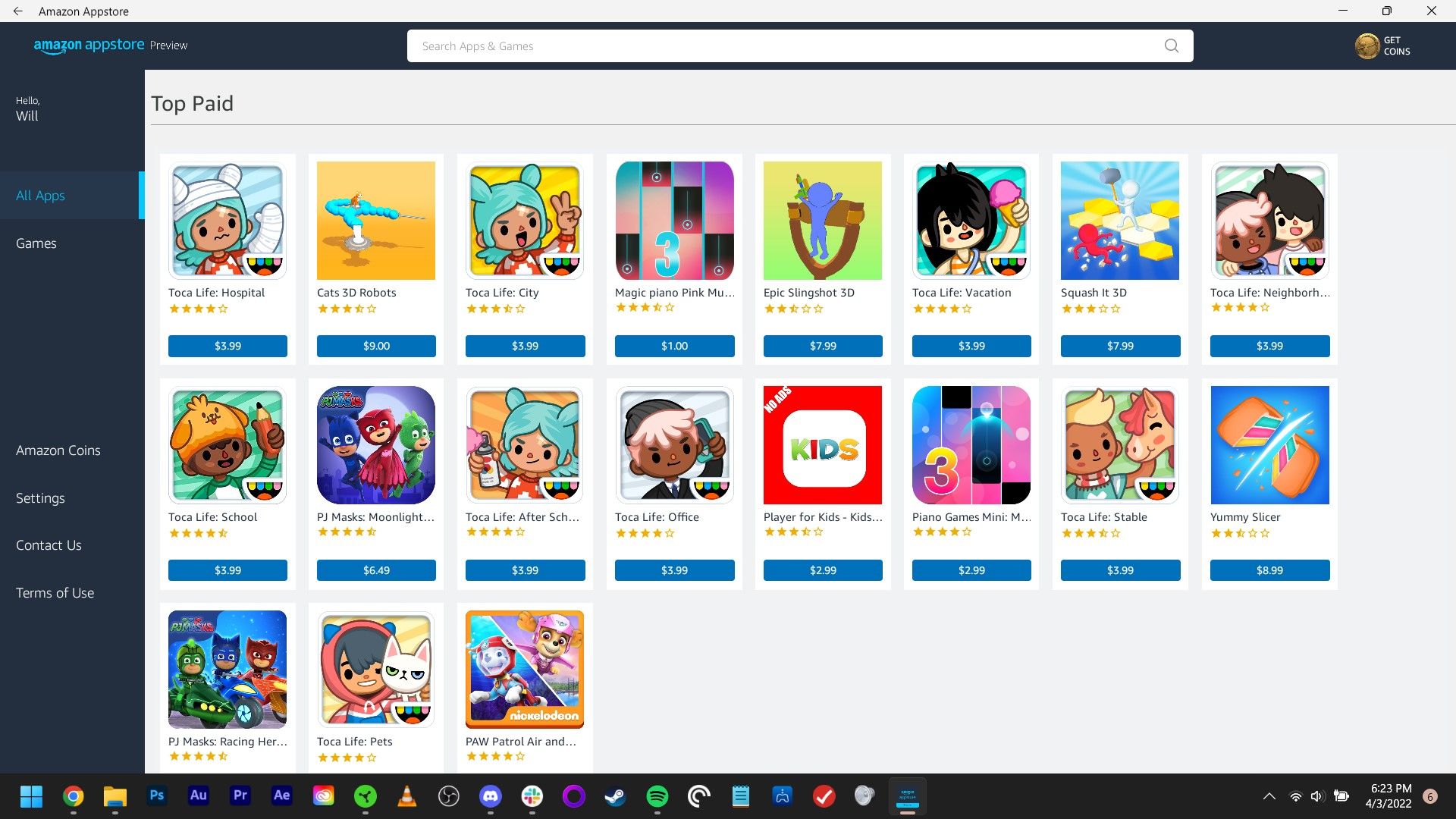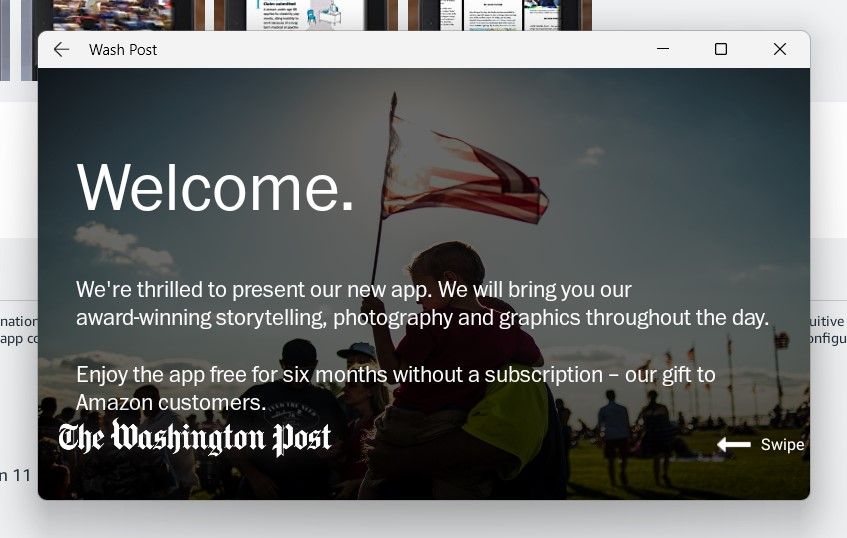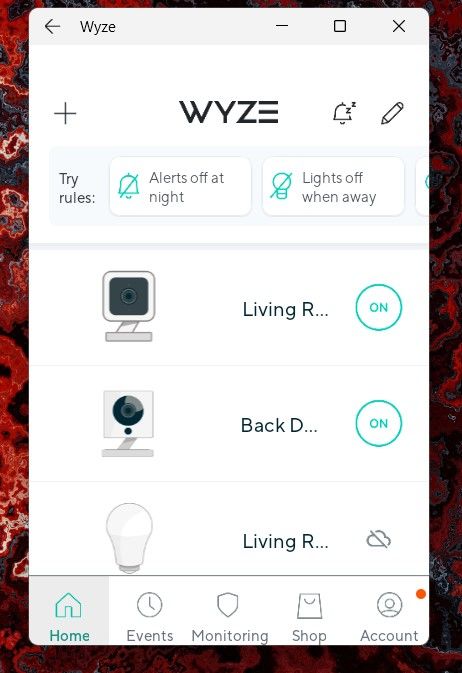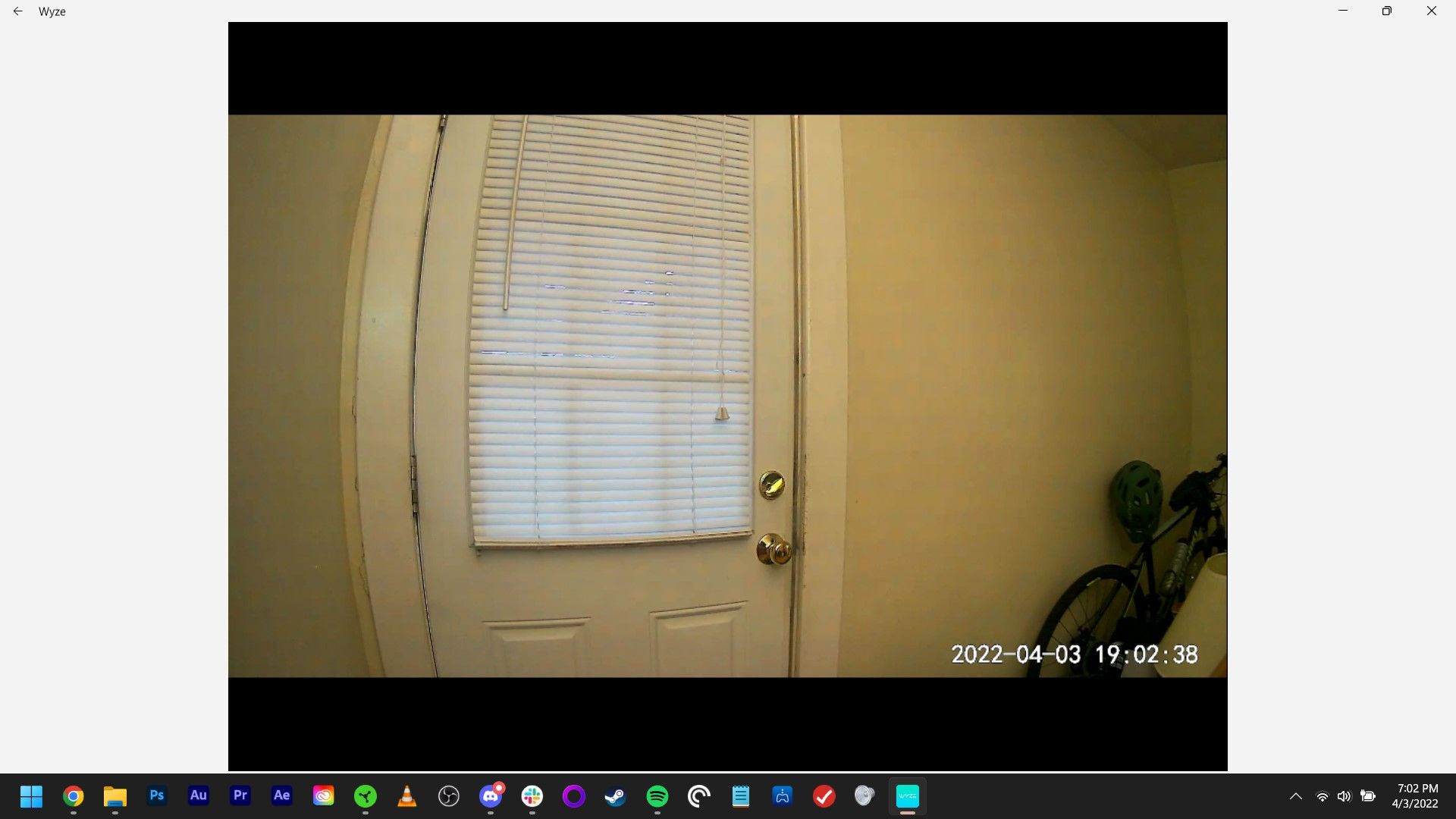Android apps have, historically speaking, never been good on large displays. There's a reason Google is dedicating so much of its time trying to make tablets good again. From basic UI elements to poor app support, Android software has never been much fun on large slates and Chromebooks.
Of course, Windows is an entirely different beast. When Microsoft announced Android apps support for Windows 11 last year, it was unclear exactly what purpose it would serve. What gap would Android software fill on such a robust platform with decades of support from developers? The answer, it turns out, remains pretty unclear.
The Amazon Appstore Experience
You could feel the entire internet — or technology nerds, anyway — collectively roll their eyes last summer during Microsoft's launch event for Windows 11. When Android app support was unexpectedly announced as an addition to the Microsoft's latest OS, it was a massive surprise, a moment that felt like it could mean something new and exciting for the future of the ever-blooming partnership between Google and Microsoft. When Amazon's role in this was revealed, it was like a balloon slowly deflating into nothing.
The initial Amazon Appstore reveal from last June.
It might sound dramatic, but in the near-decade since it launched, the Amazon Appstore has gone from an intriguing competitor to the Play Store to an also-ran used primarily on the company's lineup of cheap tablets. Many of the most popular apps you would want to run in 2022 aren't on it, and when you do find a service you're looking for, it's often outdated or abandoned compared to its Play Store counterpart. And the Amazon Appstore on Windows 11 doesn't feature that entire app library, so you're dealing with an even smaller pool than you would otherwise.
The Amazon Appstore doesn't come with Windows 11 by default, but anyone in the US can download it by heading to the Microsoft Store on their device. It's as simple as installing any other native Windows app — a good start for potentially getting users onboard. Unfortunately, it's unclear when it'll arrive for users in regions outside the US. You'll need an Amazon account to log in, of course, but the service itself is free.
It might be easy to install, but I found browsing and using the service unsurprisingly mediocre. I'm testing this app store out on a souped-up gaming laptop, yet for some reason, the Appstore felt sluggish, taking seconds to load each page and dropping frames when the home screen banner was changing slides. The storefront itself is barebones, offering just two basic categories along the left-side panel and a basic search bar along the top.
As for the app selection, it's as bad as you might've guessed from the jump. Forget Google apps, obviously — they aren't on Fire Tablets, and they aren't here. TikTok has been predominantly featured on Microsoft's press images for the Appstore since it was announced, and for good reason: it's the only major social network with a listing. Forget Facebook, Instagram, and Twitter — you're stuck with TikTok if you want to experience the social side of the web.
Amazon's "Top Paid" games.
Games don't fare much better. Looking at the top paid titles, I only recognized two names — and that was because I knew the Nickelodeon properties they were based on — not the games themselves. Free titles didn't fare much better; you'll find Subway Surfers and the Talking Tom series, but not much more. None of our favorite free-to-play titles appeared in a search: no Among Us, Call of Duty Mobile, or Roblox.
Granted, you can fill all of these absences elsewhere on Windows 11. Many of these titles have versions on Steam or the web — you don't need the Android version of Among Us to play on Windows. The same goes for those missing apps, from Google services to social networks to recipe apps and smart home controls. It's not hard to access Gmail these days, even if it's not in a dedicated app, and that all begs the question: why does this service even exist?
If Android apps provided a good experience on Windows, that would give us a great answer. Dedicated windows for apps and services are great; not everyone wants to do everything inside their computer stuck in a single browser window. Unfortunately, Android apps are infamous for poor big screen support — that's why Android 12L exists, after all. So when opening the Washington Post app on my PC (it's one of the few mainstream services on the Appstore, thanks, presumably, to its owner), I wasn't surprised to see a small window taking up less than a fourth of the display. Nor was I shocked to find it asking me to "swipe to continue" on a device without a touchscreen.
Look at all that wasted white space on the left and right.
Making these apps full-screen simply expands the gray borders along the left and right, effectively granting you the same amount of screen real estate as your phone, just taller. It's not very useful for this sort of experience, and in a world where The Washington Post exists on the web, it's unclear why you would ever want to run the mobile app instead. Yet Amazon put it front and center on the homepage, giving it feature billing as one service you have to try.
Between the lack of options and the limited use cases, I really struggled to see what I was supposed to get from Android apps on Windows 11. When Google added the Play Store to Chromebooks, it sported a much wider collection, along with an actual reason to turn to mobile apps. Windows has infinite third-party apps, available either on the web or through the Microsoft Store. It has games, too, whether you're streaming through Stadia or downloading Elden Ring on Steam.
It's a bad enough experience to make you wonder why it exists — something I really hoped sideloading would clue me in on. These are Android apps, after all, so of course you can find a way around arbitrary limitations like a limited app selection.
Sideloading APKs on Windows 11
If you can get the Amazon Appstore on your device, setting up the option to quickly sideload apps just by double-clicking an APK file is quick and easy. Once you have WSA PacMan installed on your computer, you open up your world to anything found on sites like APK Mirror. Go ahead and grab Wyze, or Alto's Adventure, or Gmail — though you may need to install Google Play Services on your computer to get it working, just as you would with a Fire Tablet.
For the tech-savvy among us, it's a fun exercise. For everyone else, it's a hard pass. Any app sideloaded on your computer will suffer from the same issues as the official Appstore ones did. Missing controls, awkward orientations and layouts, huge borders along the sides — it's all here. It's also far less easy to browse through apps on sites like APK Mirror. It makes sense — those sites weren't built for app discovery, after all — but when looking at the site as a way to make up for how disappointing the Appstore is, it struggles to offer a good alternative.
Wyze's default size after installation.
Sideloading on Windows 11 did present me with a single moment where I felt like I had found a real utility for this service. Downloading the latest Wyze APK from APK Mirror allowed me to view my security cameras and control my lights right from my laptop. Sure, my phone was still always within reach, but I can imagine pinning and using Wyze on my PC throughout the day, flipping on the lights as the sun finally sets, or checking who's at the door when I hear a knock during a meeting.
This isn't quite full-screen, but it's close enough.
I'm still not sure it's enough of a use case to actually use regularly. If Wyze announced a web app tomorrow, I would never open the Android version again, leaving it to rot away on my laptop before I finally remembered to uninstall it. But it is a reason, and as frustrating as it might be to have to rely on sideloading APKs to get there, it's definitely an upgrade over Windows 10.
At the end of the day, I'm not sure there's much reason for anyone beyond enthusiasts to try out Android apps on Windows 11. Most users will only ever experience the Amazon Appstore's library, which lacks depth and recognizable names. Those that do take the extra steps to install WSA PacMan on their PC will be met by a lack of utility and polish.
There's no doubt that it's a cool gimmick, and booting up some classic Android software on your laptop can be a neat party trick. But overall, stick to the existing software you already trust. Whether it's dedicated apps or a basic bookmark in your browser, it'll probably work better.

